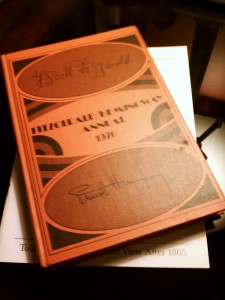MLA Citation:
Cotter, James Finn. “A Source for Seymour’s Suicide: Rilke’s Voices and Salinger’s Nine Stories“. Papers on Language and Literature: A Journal for Scholars and Critics of Language and Literature: 25.1 ( 1989 Winter), pp. 83-98.
First Paragraph:
J. D. Salinger’s short story, “A Perfect Day for Bananafish,” employs the traditional device of a surprise ending. Seymour Glass returns to his Miami hotel room, glances at his wife asleep on her bed, takes from his luggage a heavy-caliber German automatic, sits down on his bed, looks again at Muriel, and fires a bullet through his head.
Summary:
Cotter, after giving a laundry list of possible explanations for Seymour’s suicide, including theories as wide-ranging as sexual frustration to the fulfillment of nirvana, examines the influence of Rilke’s poetry. He starts with “Bananafish specifically, noting that several previous scholars have also pointed to the likelihood that the German poet Seymour refers to in “Bananafish” is Rilke. He compares “Bananafish” to “The Song of Suicide” noting parallels and suggesting connections that include a concentration on materialism, especially connected to the stomach and with “hunger”. Cotter then expands his analysis to include the other Voices, which as he notes also contain nine items, (ten, with the addition of a title page) and their connections to Nine Stories.

